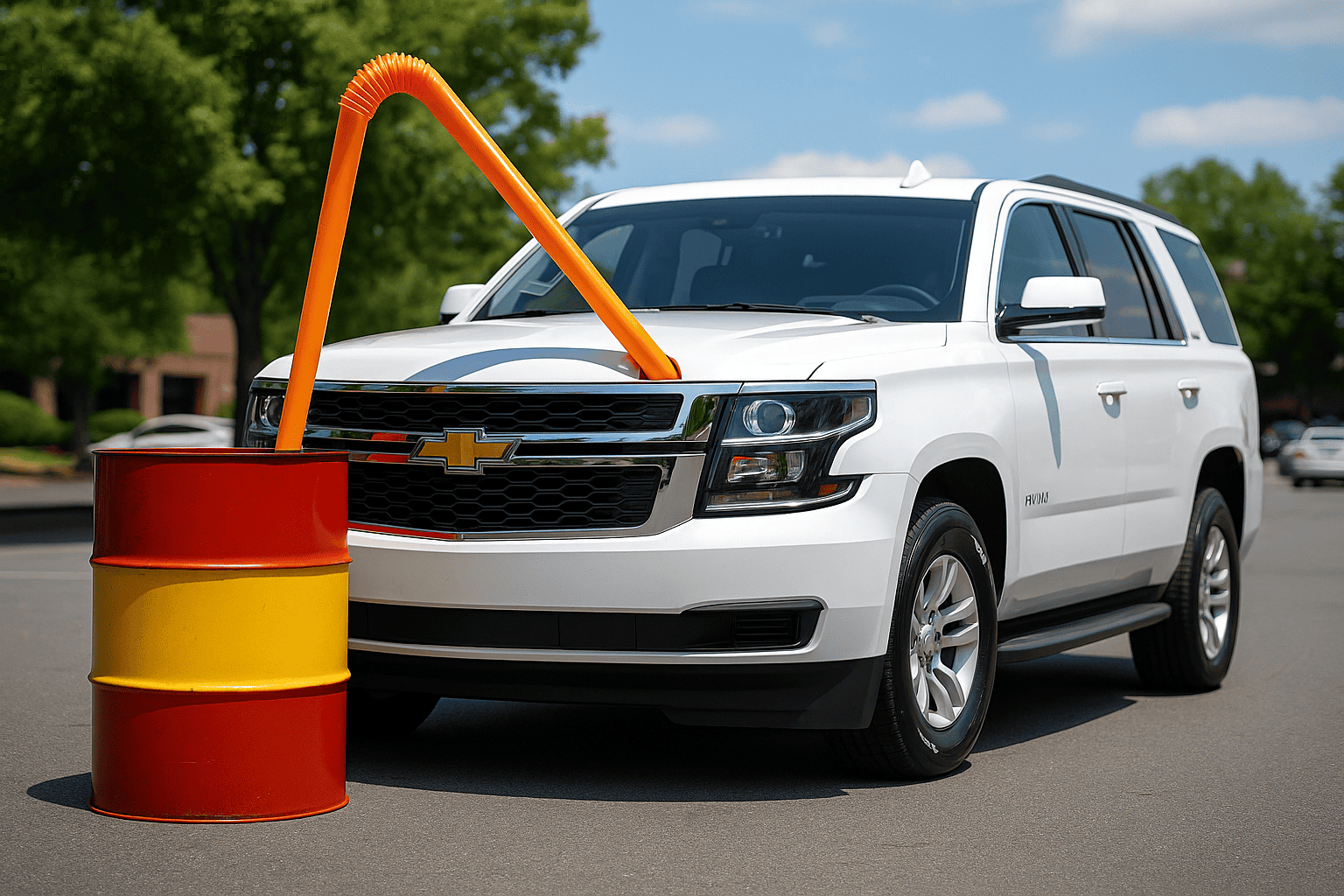Fuel in the Oil? The Hidden Problem Behind This Tahoe’s Poor MPG
When a check engine light is paired with poor fuel economy, it’s often a sign of a deeper issue within the engine’s fuel management system. This 2016 Chevy Tahoe came in with both problems—and diagnosing it required a thorough process of elimination to find the real culprit.

The Complaint
The customer reported that their Tahoe was getting unusually poor fuel mileage, and the check engine light (CEL) was on. Mileage at the time of service: 121,421 miles.
Initial Diagnostics
Using GM’s MDI interface and GDS software, we pulled two key fault codes:
- P0172 – System Too Rich (Bank 1)
- P0175 – System Too Rich (Bank 2)
These codes indicated that both banks of the engine were running a fuel-rich mixture—meaning the engine was burning more fuel than it should.
Investigating the Cause
We used GDS software to review live engine data, which confirmed the rich condition. Next, we tested the air-fuel ratio (AFR) sensors. All sensors were functioning properly and providing accurate data. No electrical issues or feedback sensor errors were found.
We then tested the low- and high-pressure fuel pumps. Both were operating at their specified pressures and performed correctly under load. The direct fuel injectors were removed and flow-tested—again, no faults were found.
Despite all systems checking out, the engine was still running excessively rich. That led us to perform a deeper inspection.
The Breakthrough
During a physical inspection of the intake system, we detected a strong smell of raw fuel and visible fuel vapor around the throttle body and intake piping. The engine oil also smelled like gasoline, indicating fuel contamination in the crankcase.
Further testing revealed that when the PCV system was blocked off, the rich condition disappeared. This pointed us toward a mechanical issue upstream of the intake.
Eventually, we found the culprit: the high-pressure fuel pump had failed internally. Its seals were leaking fuel directly into the engine’s oil system and intake tract, contributing to the excess fuel in combustion and the rich condition across both banks.
The Fix
We replaced the high-pressure fuel pump with a new GM unit and performed an oil change to remove the fuel-contaminated oil. The engine was retested, and all fuel trims returned to normal. The CEL stayed off, and fuel economy began improving immediately.
Fuel Problems? Don’t Waste Time Guessing.
From sensor validation to full mechanical inspection, CMD Automotive is equipped to get to the bottom of complex drivability issues. If your vehicle is burning more fuel than it should, don’t wait—bring it in and let us take care of it the right way.
📍 Located in Charlotte’s South End
📞 Call Us: 704-527-4009 or Schedule Service Online
